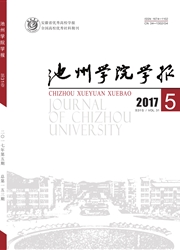

 中文摘要:
中文摘要:
通过分析掺Zn和掺Ga的Bi系超导体在降温(温度从295K-30K)过程中的正电子寿命谱,结果表明:超导体在降温的过程中,由于热膨冷缩效应使得基体和缺陷处的电子密度整体性升高。但在超导临界温度转变点Tc附近,由于发生了正常态到超导态的转变,这种转交明显改变了高温超导体的电子态。随着温度的降低.当超导体的温度接近Tc时,超导体中的自由电子形成库柏对,使得基体以及缺陷处的自由电子密度降低,τ1,τ2和τm值升高。在转变温度点TC,τ1,τ2和τm出现一个峰值,而自由电子密度nb出现了极小值。
 英文摘要:
英文摘要:
In analyzing the positron lifetime spectra of Bi-series superconductors doped with Ga and Zn at temperature from 295K to 30K, we can conclude that:As the temperature of the Bi-series superconductors decreasing, the free electronic density of both the bulk and the defects increase due to the effects of cooling constriction. The transformation from normal- to superconducting- state occurs nearly Te, which changes the electronic state of superconductors apparently. As the temperature of the superconductors near to Te, the free electrons tend to form Cooper pairs, which give rise to the decrease of electron density and the increase of the values of τ 1, τ 2 and τ m. At Te, τ 1, τ 2 and τ m reach maximum values, while the electron density of the superconductor reaches a minimum value.
 同期刊论文项目
同期刊论文项目
 同项目期刊论文
同项目期刊论文
 The behavior of oxygen and defects in Si-based semiconductor studied by positron annihilation techni
The behavior of oxygen and defects in Si-based semiconductor studied by positron annihilation techni 期刊信息
期刊信息
